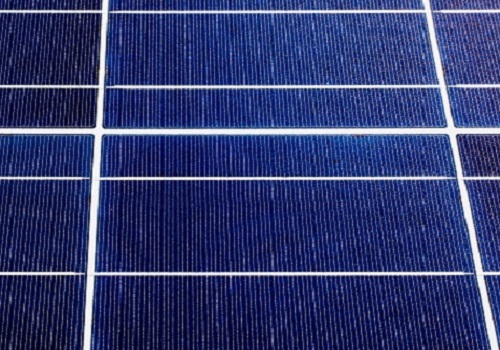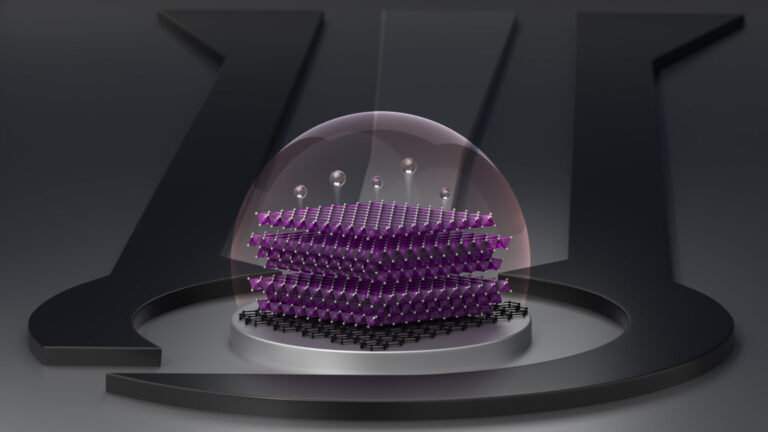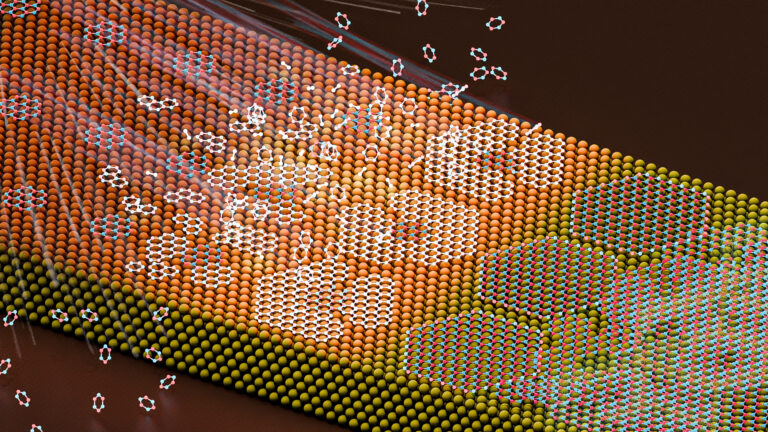Material Science and Engineering
Photodetectors gain a super-sized advantage
Integrating large-area perovskite crystals into simple circuitry leads to optical sensors with high bandwidth and sensitivity.


Solar conversion efficiencies can be further boosted by a simple method to improve the growth of crystals.
© 2015 Alamy
Low-cost photodetectors that have quick response times and high sensitivity have been produced by researchers at KAUST by adapting classical chemistry techniques to transform metal and organic atoms into extended near-perfect crystal films1.
Inorganic–organic compounds that crystallize into so-called perovskite structures have gained attention because they can be solution-processed into photovoltaic devices. Recent fabrication strategies and materials have helped boost perovskite solar conversion efficiencies to levels that rival silicon cells. Researchers anticipate even higher efficiencies if crystal defects can be minimized during the growth process.
Osman Bakr from the University’s Solar & Photovoltaics Engineering Research Center and colleagues realized that to make perovskite crystals arrange in an orderly way into a film, they had to find a way to control the growth kinetics.
To do so, they turned to ‘antisolvent’ crystallization. The technique, which is widely used to purify proteins and other bio-compounds, begins by dissolving a compound in a compatible liquid. Then, adding the antisolvent—a liquid in which the molecule is poorly soluble—causes the particle to precipitate.
The team first dissolved precursors for a perovskite called methylammonium lead bromide into an organic solvent and then poured the mixture into a sealed dish containing a substrate like silicon. By diffusing in a chlorinated antisolvent through a small opening in the dish’s lid, they gradually crystallized millimeter-scale perovskite films on their substrate at room temperature. Critical to this procedure was constant stirring of the liquid; the continuous movement helped to nucleate the growth on the surface instead of in solution.
Mobility measurements revealed the new film could move charges 100 times faster than normal polycrystalline perovskite films and defect densities were a million times lower.
“This was very exciting for us—we had a film that could grow over large areas and behave much like a single crystal,” Bakr said. “It inspired us to try and make the crystals useful for devices.”
The team fabricated a simple photodetector by evaporating metal electrodes onto a perovskite-coated silicon wafer, and its amplification and response time was comparable to cutting-edge semiconductor transistors. Furthermore, the device combined rapid detection with high sensitivity, a rare combination for solution-processed photodetectors.
“Using the stirring force approach to force perovskites to crystallize on a substrate makes them really easy to handle,” noted Bakr. “We’d like to expand the spectrum of these photodetectors to multiple wavelengths and explore other photovoltaic devices, because with this type of crystallinity, we can compete with traditional semiconductors.”
References
- Saidaminov, M. I., Adinolfi, V., Comin, R., Abdelhady, A. L., Peng, W. et al. Planar-integrated single-crystalline perovskite photodetectors. Nature Communications 6, 8724 (2015).| article
You might also like

Material Science and Engineering
Electron movie guides design of layered perovskite materials

Material Science and Engineering
Remote region sensor for essential vitamin deficiency

Material Science and Engineering
Low-power hydrogen sensor detects leaks in an instant

Material Science and Engineering
Illuminating pathways to long-lived organic solar cells

Chemistry
Beating the dark current for safer X-ray imaging

Chemical Engineering
Net benefits for advanced materials design

Material Science and Engineering
Atom-thin insulator grown into perfect films

Material Science and Engineering



